More specifically, Economics is the study of what constitutes rational human behavior in the endeavor to fulfill needs and wants.
Adam Smith (1723 - 1790), the "father of modern economics"
Assumption
Adam Smith (1723 - 1790), the "father of modern economics"
Assumption
- Human beings will aim to fulfill their self-interests.
- Individuals are rational in their efforts to fulfill their unlimited wants and needs.
The definition set out at the turn of the twentieth century by Alfred Marshall, author of "The Principles Of Economics" (1890)
Thus it is on one side the study of wealth; and on the other, and more important side, a part of the study of man."
Thus it is on one side the study of wealth; and on the other, and more important side, a part of the study of man."
In order to begin our discussion of economics, we first need to understand
(1) the concept of scarcity and
(2) the two branches of study within eco: microeconomics and macroeconomics.
scarcity the tension between our limited resources and our unlimited wants and needs.
Macro and Microeconomics
Production Possibility Frontier (PPF)
Under the field of macroeconomics, the production possibility frontier (PPF) represents the point at which an economy is most efficiently producing its goods and services and, therefore, allocating its resources in the best way possible.
so an economy, to achieve efficiency, must decide what combination of goods and services can be produced.
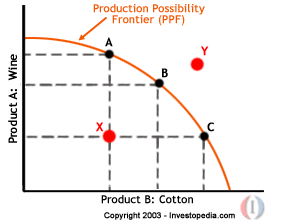
If more wine is in demand, the cost of increasing its output is proportional to the cost of decreasing cotton production.
the PPF would be pushed outwards. When the PPF shifts outwards, we know there is growth in an economy.
opportunity cost is important to the PPF because a country will decide how to best allocate its resources according to its opportunity cost. Therefore, the previous wine/cotton example shows that if the country chooses to produce more wine than cotton, the opportunity cost is equivalent to the cost of giving up the required cotton production.
Remember that opportunity cost is different for each individual and nation. Thus, what is valued more than something else will vary among people and countries when decisions are made.
Trade, Comparative Advantage and Absolute Advantage
Specialization and Comparative Advantage
Determining how countries exchange goods produced by a comparative advantage ("the best for the best") is the backbone of international trade theory.
Like opportunity cost, specialization and comparative advantage also apply to the way in which individuals interact within an economy.
Absolute Advantage
A country (Because of technological advancements) that can produce more of both goods is said to have an absolute advantage.
Better quality resources can give a country an absolute advantage as can a higher level of education and overall technological advancement. It is not possible, however, for a country to have a comparative advantage in everything that it produces, so it will always be able to benefit from trade.
it is the backbone of a market economy
Price, therefore, is a reflection of supply and demand.
Time and Supply
So it is important to try and determine whether a price change that is caused by demand will be temporary or permanent.
Shifts vs. Movement

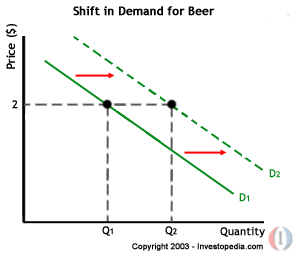
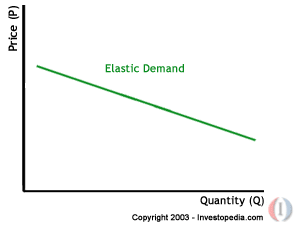
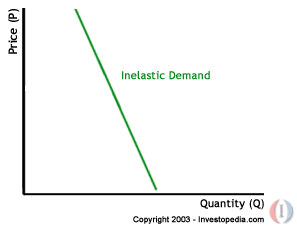

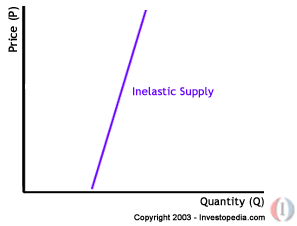
Income Elasticity of Demand
Products that witness no change in demand despite a change in income usually have an income elasticity of zero - these goods and services are considered necessities.
(1) the concept of scarcity and
(2) the two branches of study within eco: microeconomics and macroeconomics.
scarcity the tension between our limited resources and our unlimited wants and needs.
Macro and Microeconomics
Macro and microeconomics are the two vantage points from which the economy is observed.
Macroeconomics looks at the total output of a nation and the way the nation allocates its limited resources of land, labor and capital in an attempt to maximize production levels and promote trade and growth for future generations.
After observing the society as a whole, Adam Smith noted that there was an "invisible hand" turning the wheels of the economy: a market force that keeps the economy functioning.
Microeconomics looks into similar issues, but on the level of the individual people and firms within the economy. It tends to be more scientific in its approach, and studies the parts that make up the whole economy. Analyzing certain aspects of human behavior, microeconomics shows us how individuals and firms respond to changes in price and why they demand what they do at particular price levels.
In both systems, however, scarcity and unlimited wants force governments and individuals to decide how best to manage resources and allocate them in the most efficient way possible.
Production Possibility Frontier (PPF)
Under the field of macroeconomics, the production possibility frontier (PPF) represents the point at which an economy is most efficiently producing its goods and services and, therefore, allocating its resources in the best way possible.
so an economy, to achieve efficiency, must decide what combination of goods and services can be produced.

Change in Technology
the PPF would be pushed outwards. When the PPF shifts outwards, we know there is growth in an economy.
opportunity cost is important to the PPF because a country will decide how to best allocate its resources according to its opportunity cost. Therefore, the previous wine/cotton example shows that if the country chooses to produce more wine than cotton, the opportunity cost is equivalent to the cost of giving up the required cotton production.
Remember that opportunity cost is different for each individual and nation. Thus, what is valued more than something else will vary among people and countries when decisions are made.
Trade, Comparative Advantage and Absolute Advantage
Specialization and Comparative Advantage
Determining how countries exchange goods produced by a comparative advantage ("the best for the best") is the backbone of international trade theory.
Like opportunity cost, specialization and comparative advantage also apply to the way in which individuals interact within an economy.
Absolute Advantage
A country (Because of technological advancements) that can produce more of both goods is said to have an absolute advantage.
Better quality resources can give a country an absolute advantage as can a higher level of education and overall technological advancement. It is not possible, however, for a country to have a comparative advantage in everything that it produces, so it will always be able to benefit from trade.
Supply and Demand
it is the backbone of a market economy
Price, therefore, is a reflection of supply and demand.
Time and Supply
So it is important to try and determine whether a price change that is caused by demand will be temporary or permanent.
Shifts vs. Movement

A shift in a demand or supply curve occurs when a good's quantity demanded or supplied changes even though price remains the same. meaning that quantity demand is affected by a factor other than price. shift in the demand relationship would occur if, for instance, beer suddenly became the only type of alcohol available for consumption.

Elasticity
Products that are necessities are more insensitive to price changes
A good or service is considered to be highly elastic if a slight change in price leads to a sharp change in the quantity demanded or supplied. Usually these kinds of products are readily available in the market and a person may not necessarily need them in his or her daily life.




Factors Affecting Demand Elasticity
The availability of substitutes
Amount of income available to spend on the good
TimeIncome Elasticity of Demand
Products that witness no change in demand despite a change in income usually have an income elasticity of zero - these goods and services are considered necessities.
Utility
Utility is an abstract concept rather than a concrete, observable quantity.
Although total utility usually increases as more of a good is consumed, marginal utility usually decreases with each additional increase in the consumption of a good.
In other words, total utility will increase at a slower pace as an individual increases the quantity consumed.

Although total utility usually increases as more of a good is consumed, marginal utility usually decreases with each additional increase in the consumption of a good.
In other words, total utility will increase at a slower pace as an individual increases the quantity consumed.

The law of diminishing marginal utility helps economists understand the law of demand and the negative sloping demand curve.
In order to determine what a consumer's utility and total utility are, economists turn to consumer demand theory, which studies consumer behavior and satisfaction.
Economists assume the consumer is rational and will thus maximize his or her total utility by purchasing a combination of different products rather than more of one particular product.
Monopolies, Oligopolies and Perfect Competition
There are two extreme forms of market structure: monopoly and, its opposite, perfect competition.
Perfect competition is characterized by many buyers and sellers, many products that are similar in nature and, as a result, many substitutes. Perfect competition means there are few, if any, barriers to entry for new companies, and prices are determined by supply and demand. Thus, producers in a perfectly competitive market are subject to the prices determined by the market and do not have any leverage.
Oligopolies are industries with a few interdependent companies.
Perfect competition is characterized by many buyers and sellers, many products that are similar in nature and, as a result, many substitutes. Perfect competition means there are few, if any, barriers to entry for new companies, and prices are determined by supply and demand. Thus, producers in a perfectly competitive market are subject to the prices determined by the market and do not have any leverage.
Oligopolies are industries with a few interdependent companies.
No comments:
Post a Comment